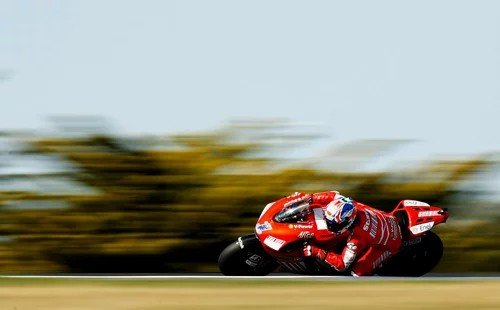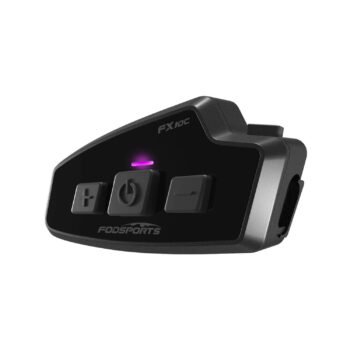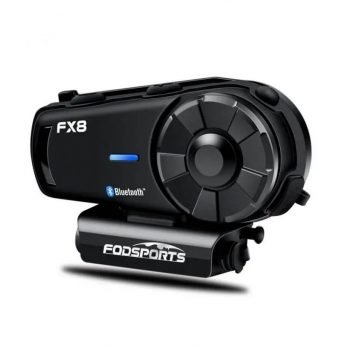When you ride on uneven trails muddy paths, or jagged terrain, every part of your motorcycle matters. Even the motorcycle fender plays a key role. The height of motorcycle fenders has a big influence on how the bike performs off-road. It helps with debris clearance and keeps the rider more protected. By 2025, riders still […]

Motorcycle Photography Ideas 2024 Ultimate Guide
Capturing the essence of motorcycles through photography is an exhilarating pursuit. This is not mattering you're a passionate rider or simply an admirer of these magnificent machines.
Motorcycle photography offers a realm of endless creative possibilities. You can capture the freezing split-second moments of adrenaline-fueled action. Also, there are the sleek lines and intricate details of a bike's design you can seize.
In this comprehensive guide, we'll delve into the art of capturing motorcycles in motion. And, we will explore techniques, gear essentials, and invaluable motorcycle photography tips. I believe this guidance will elevate your skills and create stunning visual narratives.
Remember to bookmark this page if you like the content.
Table of Contents
The Allure of Motion: Embracing the Dynamic Nature of Motorcycles
Motorcycles are inherently dynamic. It embodies a sense of freedom and exhilaration that captivates riders and observers. As a photographer, your goal is to harness this energy and translate it into powerful, evocative images. The image will transport viewers into the heart of the action.
Whether you're shooting on the open road, at a racetrack, or in a controlled environment, remember this:
Embracing the dynamic nature of motorcycles is key to capturing their essence.

Motorcycle photography ideas - Capture motorcycle in motion
Gear Essentials: Choosing the Right Tools for Motorcycle Photography
Exceptional gear is not an absolute necessity for creating compelling motorcycle photography. But, having the right tools is important. They can enhance your ability to capture the essence of these powerful machines. For starters, a camera with fast autofocus capabilities and a high burst rate is enough. It can freeze fast-paced action and helps starters quickly master photography skills. If you are professional, a versatile lens range, spanning from wide-angle to telephoto must be your favorite tool. They will provide the flexibility to capture various perspectives and angles.

the essential motorcycle photography gear
Camera Bodies: Speed and Precision
When capturing the rapid movement of motorcycles, speed and precision are paramount. Consider investing in a camera body with the following features:
- advanced autofocus tracking capabilities;
- a high burst rate (ideally 8-10 frames per second or higher)
- a robust buffer for continuous shooting.
These features will enable you to freeze the action with pinpoint accuracy. Most importantly, ensuring tack-sharp images even in the most dynamic situations.
Lenses: Versatility and Reach
The right lens can make all the difference in motorcycle photography. A versatile zoom lens, such as a 24-70mm or 70-200mm, will provide the flexibility to capture a wide range of perspectives. From intimate details to sweeping landscapes, you will get all of them. For even greater reach, consider a telephoto lens. For example, a 100-400mm or 150-600mm. It will allow you to capture stunning close-ups and compress the background for a more dramatic effect.
Accessories: Stability and Mobility
Stability is crucial when shooting motorcycles in motion. The reason is that even the slightest camera shake can result in blurred images. I advise you to invest in a sturdy tripod or monopod to minimize camera movement. When using longer focal lengths or slower shutter speeds, it will be very helpful. Additionally, consider accessories like camera straps, bags, or vests. These accessories allow for easy mobility and quick access to your gear. So you can capture those fleeting moments with ease.
Mastering Exposure: Freezing or Blurring the Action
One of the most critical aspects of motorcycle photography is mastering exposure to achieve the desired effect. You may want to freeze the action with razor-sharp clarity. Or you want to intentionally blur the motion to convey a sense of speed and dynamism. Whatever, understanding the interplay between shutter speed, aperture, and ISO is essential.
Freezing the Action
To freeze the action and capture crisp, detailed images of motorcycles, you'll need a fast shutter speed. This is especially important when capturing a motorcycle in motion.
As a general guideline, aim for shutter speeds ranging from 1/800th to 1/1600th of a second or higher. This depends on the speed of the subject and the amount of ambient light available. This will ensure that even the smallest details, such as tire treads and brake discs, are rendered with stunning clarity.
Blurring the Action
Maybe you want to convey a sense of speed and motion. Then consider a slower shutter speed and panning your camera to follow the movement of the motorcycle. This technique, known as "panning," will blur the background while keeping the subject relatively sharp. The image will create a dynamic and visually striking effect. Experiment with shutter speeds ranging from 1/30th to 1/125th of a second. And, adjust your panning technique and camera settings. These settings can help you to achieve the desired level of blur.
Composition and Perspective: Crafting Compelling Visuals
Composition and perspective play a crucial role in creating visually compelling motorcycle photographs. Here are three basic motorcycle photography ideas for composition and perspective:
- Carefully consider the placement of your subject within the frame
- Use leading lines
- Include environmental elements in the image.
With these ideas, you can elevate your images from mere snapshots to works of art.

motorcycle photography composition and perspective
Framing and Composition
When composing your shots, pay attention to placing the motorcycle within the frame. Consider the rule of thirds, which suggests placing your subject along one of the intersecting lines or points of the imaginary grid. This can create a more dynamic and visually appealing composition. Additionally, you can try different angles and perspectives. This tip is to add depth and interest to your images.
Leading Lines and Environmental Elements
Incorporate leading lines, such as winding roads, curving tracks, or architectural elements. Leading lines can guide the viewer's eye toward the subject and create a sense of depth and movement. What's more, consider including environmental elements like landscapes, cityscapes, or distinctive landmarks. These elements can provide context and enhance the overall visual narrative.
Negative Space and Minimalism
Embrace the power of negative space and minimalism to create striking, minimalistic compositions. This is also a widely used motorcycle photography idea.
You can position your subject against a clean, uncluttered background for photographing. The image will draw the viewer's attention directly to the motorcycle's lines, details, and form. Thus creating a visually striking and impactful image.
Capturing the Details: Showcasing the Craftsmanship
Motorcycle photography is not just about capturing the thrill of motion. It also showcases the intricate details and craftsmanship that go into these machines. Every aspect of a motorcycle can be a subject for artistic expression. From bodywork to engine components, use these motorcycle photography tips to capture them.

capturing the details of a motorcycle. Copyright: Martin Alfaro
Close-up and Macro Photography
Close-up and macro photography is also another widely used photography idea for motorcycling. This can help you capture the finer details of a motorcycle. You can isolate specific elements, such as exhaust pipes, brake calipers, or intricate engine components. Also, you can showcase their unique textures, shapes, and patterns. I advise you to carefully control the depth of field and lighting when photographing. Then you can create visually stunning images. Remember to highlight the exceptional craftsmanship and engineering that goes into these machines.
Lighting and Reflections
Lighting and reflections are some of the most useful motorcycle photography ideas. It plays a significant role in enhancing your motorcycle photographs' visual impact. Consider using different lighting setups, such as studio lighting or natural light. The light can help accentuate the curves, contours, and textures of the bike. Plus, consider incorporating reflections from puddles, mirrors, or other reflective surfaces. Believe me, they can create unique and visually striking compositions. Of course, you need to consider the motorcycle photography angles when using lights and reflections. Different lights, reflections, and photography angles always bring you different results.
Storytelling and Emotion: Capturing the Essence of the Ride
Motorcycle photography is not just about capturing static images. It's telling a story and evoking emotions that resonate with riders and non-riders alike. You need to consider the environment, the rider's body language, and the overall mood. By capturing a running motorcycle, you can create powerful visual narratives. This can transport viewers into the heart of the riding experience.
Motorcycle Photography Environment
The environment in which you photograph a motorcycle is a crucial role in telling a compelling story. Consider photographing the motorcycle in iconic locations. You can choose winding mountain roads, desert landscapes, or urban settings. These places can create a sense of adventure and exploration. Besides, pay attention to elements like weather conditions, time of day, vehicles, or people. These elements can add depth and context to your images. Remember to take images from different photography angles. You will find them totally different in visual experience.
Capturing the Rider's Emotion
The rider's body language and facial expressions can convey emotion and energy. So, this is another motorcycle photography tip to add an extra layer of depth to your photographs. Capture the thrill of the ride, the focus and determination of the rider. Or the sense of freedom and exhilaration that comes with being on the open road. Remember to carefully time your shots and observe the rider's movements. You can create images that resonate with viewers on an emotional level.
Lifestyle and Editorial Photography
Motorcycle photography can also extend beyond capturing the machines themselves. Here, we will provide you with another photography idea during motorcycling.
Consider incorporating lifestyle and editorial elements into your work. For example, portraiture, action shots, or behind-the-scenes glimpses of the riding community. These types of images can add a human element to your portfolio. Thus this image can tell stories about the people, cultures, and passions that surround the world of motorcycles.
Safety Motorcycle Photography Ideas and Tips
Pursuing captivating motorcycle photography can be exhilarating, that's true. However, it's crucial to prioritize safety for both yourself and the riders working with you. Remember the following safety motorcycle photography ideas and tips.
Always follow proper safety protocols, and communicate clearly with riders. And, most importantly, never compromise on responsible practices for the sake of a shot.
Communication and Coordination
Before any shoot, establish clear communication with the riders and support crew involved. Discuss the planned shots, routes, and potential hazards before starting work. In addition, ensure everyone is on the same page on safety protocols and expectations. What's more, coordinate the means of communication. Here, we advise you to use Fodsports Bluetooth helmet intercom. It keeps you intercom and communication smoothly evening when you are cycling fastly. Just let the helmet intercoms connect you and the riders. You will free you hands and focus on photographing excellent images. It is also an essential gear to maintain a smooth and safe workflow during the shoot.
Location Scouting and Risk Assessment
Carefully scouting potential shooting locations in advance is another necessary tip. You should identify potential hazards, traffic patterns, and any necessary permissions required. Besides, assess the risks associated with each location and develop contingency plans to mitigate potential issues. For example, having designated spotters or establishing safe zones for photographers and riders.
Rider Safety and Gear for Motorcycle Photography
Ensure that all riders are properly equipped with the necessary safety gear. Including helmets, motorcycle comm system, protective clothing, and any other required equipment. Never compromise on rider safety for the sake of a shot. And, be prepared to call off or reschedule a shoot if conditions become unsafe.
| Image | Product Name | Details | Price | Shop |
|---|---|---|---|---|
 | FX10C | MESH Technology; Bluetooth 5.0; 10 mesh intercom channels; Enjoy music and navigating while intercom; Music share between 2 riders. | Single pack: $160.99 Dual Pack: $315.99 | Shop FX 10C |
 | FX8 | 8 Riders Group Intercom; Noise Reduction Function & Hi-Fi Stereo Sound Quality; 3 kinds of sound effects function Listen to radio. | Single pack: $95.99 Dual Pack: $189.99 Three Pack: $285.99 | Shop FX8 |
 | FX8 Pro | 8 Riders Group Intercom; Dual Chip Design & Noise Reduction & Three Music Effects; Quick Pairing; | Single pack: $125.99 Dual Pack: $244.99 | Shop FX8 Pro |
Frequently Asked Questions
How to take good pictures of a motorcycle?
To take good pictures of a motorcycle:
- Choose a visually appealing location with suitable lighting.
- Clean the motorcycle thoroughly and remove any distractions.
- Use a high-quality camera or smartphone with a good lens.
- Experiment with different angles and perspectives to highlight the bike's features.
- Pay attention to composition and framing.
- Utilize natural light or consider using additional lighting for better results.
- Capture both close-up details and full bike shots.
- Edit the photos afterward to enhance colors and sharpness if desired.
What lens is best for motorcycle photography?
For motorcycle photography, choose a versatile lens like a wide-angle lens or a zoom lens. A wide-angle lens, such as a 24mm or 35mm, allows you to capture the entire motorcycle and its surroundings. And, a wide-range lens can emphasize the sense of speed and context. A zoom lens, like a 70-200mm, provides flexibility to shoot close-up details or frame the bike from a distance. Ultimately, the choice depends on personal preference and the desired style of photography.
Who are the famous motorcycle photographers?
Some famous motorcycle photographers include:
- Michael Lichter: Known for capturing the spirit of motorcycle culture and the Sturgis Motorcycle Rally.
- Horst A. Friedrichs: Renowned for his stylish and documentary-style motorcycle photography.
- Jeff Koons: A renowned artist who has incorporated motorcycles into his artwork and photography.
- Simon Davidson: Known for his powerful and atmospheric motorcycle portraits.
- Franck Allais: Recognized for his creative and artistic approach to motorcycle photography.
- Erik Jutras: A talented photographer specializing in motorcycle racing and action shots.
What focal length is for motorcycle photography?
For motorcycle photography focal length, 24mm to 200mm is commonly used. A wider focal length, such as 24mm or 35mm, allows you to capture the entire motorcycle and its surroundings. They are perfect for showcasing the motorcycle in its environment. A longer focal length, such as 70-200mm, can be used to isolate specific details or shoot from a distance. They can capture close-up shots of the motorcycle or emphasize specific features. The choice depends on the desired composition and the photographer's creative vision.
Conclusion
Motorcycle photography is like any artistic pursuit. It is a journey of continuous learning and inspiration. This captivating art form combines technical prowess, creative vision, and photography machines.
By mastering the techniques outlined in this comprehensive guide, you'll be well-equipped to capture the essence of motorcycles in motion, crafting visually stunning images that resonate with both riders and non-riders alike. Remember, the journey is as exhilarating as the destination. So embrace the challenges, continuously learn, and grow. Let your passion for these magnificent machines guide your artistic expression.

Rodney L is a technical writer and product consultant with over a decade of experience in the motor industry. Rodney is a fan of performance machines that run fast and loud and an expert in all things custom. His numerous articles and write-ups are available at our knowledge base. Whether it’s something wrong with your motorcycle or you are building a custom bike, you can trust Rodney’s experience.
Motorcycle safety relies on mirrors for riders to keep tabs on what's going on around them. Yet, not every mirror cuts it the same way. Riders have long been bickering over which is better: bar end mirrors or the stock mirrors. They argue about which (Bar End Mirrors vs Stock Mirrors) gives a better view, […]
Picking the perfect brake pads for your ride has an influence on how safe you are, how well your whip handles, and what you’ll shell out over time. You’ve got a whole menu, from wallet-easy organic pads to fancy ceramic or semi-metallic types. To get why budget brake pads ain't the same as the pricier […]
E-bikes have transformed into more than just gadgets to help you get around. Now, they're speed demons that can go toe-to-toe with motorbikes. It’s 2025, and these speedy machines have gotten a huge boost from better motors, more powerful batteries, and sleek designs that cut through the air like a knife. Let’s dive into the […]
Many riders who aren't so tall or ladies just starting to ride bikes need to pick out the best Motorcycles for Short Riders and Women. They gotta look for three key things: a seat that's not too high up, a bike that's not too heavy, and something that looks good enough to give them confidence. […]
As we accelerate into 2025, motorbikes are getting a serious tech upgrade. They’re all about safer rides and more fun on the road. Even if you’re a pro or just starting, kitting out your two-wheeler with cool tech stuff is a game-changer. Check out these ten top motorcycle gadgets each motorcyclist will want in 2025. […]

